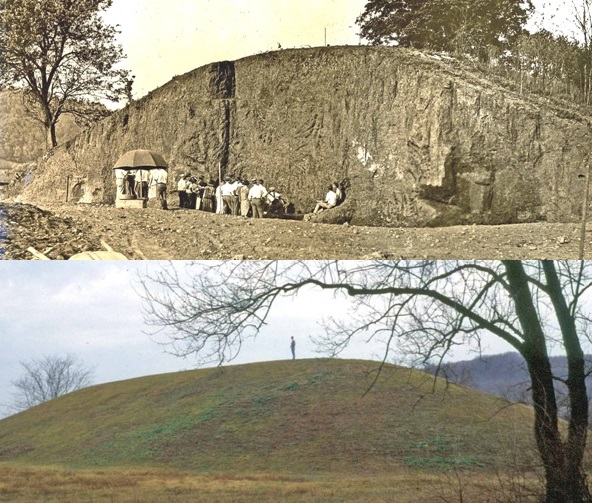Yesterday, at the business meeting of the Ohio Archaeological Council, Dr. Jarrod Burks, a colleague for whom I have the highest regard, gave a brief report on the successful efforts to save the Junction Works from development and almost certain destruction. At the conclusion of his report, he said the question now is whether or not to restore the earthworks, which have been more or less completely flattened by decades of plowing. He remarked that most folks in the room appeared to be shaking their heads in apparent agreement that the earthworks should not be restored and he expressed his strong affirmation of this view. I was a bit surprised at the lack of any dissenting views, but then I did not speak up at the time either lunch was waiting after all. Now, however, I wish to begin a conversation defending the proposition that restoring at least some portion of the earthworks would be a good thing to do. First of all, why do we preserve ancient earthwork sites? I am sure there is a diversity of perspectives regarding this question, but I think there are two principal kinds of reasons for justifying the use of public dollars in the effort: 1. We preserve earthworks so that we have the ability to conduct various kinds of research at the sites and so continue to learn new things about them and the people who built them. 2. We preserve earthworks so that people can visit the sites and have an enriching encounter with the past. The experience could be rewarding intellectually, emotionally, spiritually, or some combination of these.

Seip Mound (also referred to as Seip-Pricer Mound to distinguish it from the Seip Conjoined Mound) was almost completely excavated by the Ohio Historical Society between 1925 and 1928 (top). At the conclusion of the excavations, it was restored to its original magnificent appearance (bottom).
If these are our goals, then why would we consider restoring badly damaged earthworks? I think the answer is clear. It would greatly enhance the ability of visitors to have an enriching experience at the site. This isn’t speculation on my part. I have a great deal of experience in interpreting earthworks to a wide variety of audiences. Many of these earthworks have been subjected to varying degrees of restoration — from the modest repairs to Newark’s Great Circle to the nearly total restoration of Seip Mound. Without those restorations visitors would have a diminished experience of those sites. Given that restoring the earthworks would so clearly help us achieve the second goal, why then are so many professional archaeologists against the idea? Mainly, I think, because restorations could interfere with the ability to conduct future research at the site. In addition, there is the concern that inaccurate restorations could convey a false, or at least a misleading, interpretation of the original appearance of the earthwork. It is my opinion that if the restoration efforts use the best available data on the original configuration of the earthwork and if future excavators would be able to clearly distinguish between the original fabric of the earthwork and any restorations and if the sites are interpreted honestly as restorations, then visitors would have a richer experience of the site and the potential for future research would not be unduly compromised. Therefore, I would support restoring one or more of the earthworks at the Junction Works as long as it was done in accordance with a long-term management and interpretation plan and the restoration work was preceded by archaeological investigations of the earthwork remnants to insure that the boundaries of the earthwork had been reliably established and that important features at the base of the earthwork had been explored. Of course, in this brief post I have not been able to address every issue with restorations and some of you may have concerns that I have not considered. I invite you to post a comment or send me a more extended expression of your views, which I will consider posting as a guest blog.
Brad Lepper